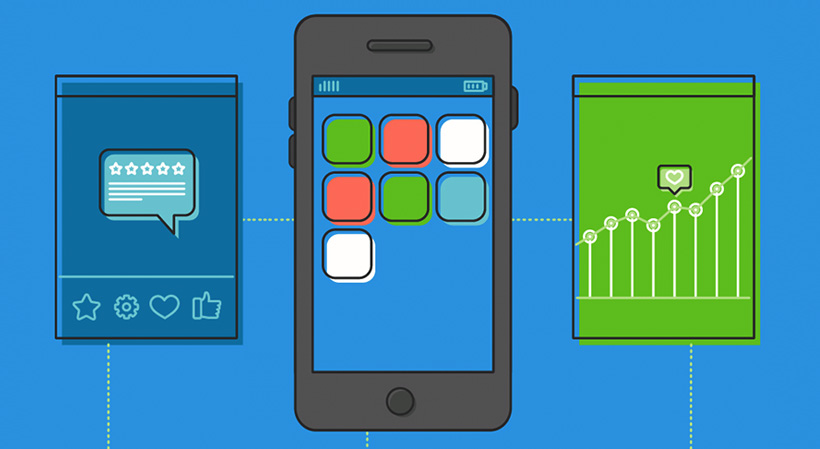With the right customer data, businesses can better understand customer preferences, personalize their marketing efforts and gain a competitive advantage.
But before you start collecting this data, it’s vital to build an organized and secure system. Your customer data collection process needs to meet the needs of your business, keep your customers trust and be compliant with privacy regulations.
In this guide, you will discover why customer data is important, how to collect it, and strategies for safeguarding the customer data collection process.
What is customer data?
Customer data can be defined as any information that businesses collect about their customers. This might include:
- Demographics. Age, gender, location, and so on.
- Contact information. Email address, phone number and home address.
- Preferences. Information about customer preferences or permissions e.g. have they opted in to email marketing? How frequently do they want to be contacted?
- Purchase history. This could include transaction dates, purchase amounts, and items returned.
- Behavioral patterns. How customers interact with your product or service – including data such as time spent on your website, downloads, or email clicks.
Each piece of information gathered can offer certain insights, but a combination of various data points builds up a clearer picture and becomes even more valuable.
Subscribe to The Start, the Newsletter Built for Entrepreneurs
Why collect customer data?
Data gathered from your customers can be used in a variety of ways. For instance, you could segment your audience based on demographics and behavior for marketing purposes, or create personalized recommendations based on their purchase history.
As well as improving your communication with customers, you can improve your offerings overall – information such as customer feedback, purchasing history and behavioral patterns can provide actionable insights for improving your products or services and making better predictions about future purchases.
Ultimately, customer data allows businesses to make better and more informed decisions. Armed with valuable information about your customers, your business will be more successful at continuity planning, meeting customer needs, bringing in more sales and building a great reputation.
How to collect customer data
There are a lot of different ways to collect data, and the best method depends on what data you want and what you intend to use it for. Some common techniques include:
Surveys
These can be sent out via email to anyone on your marketing list or as a follow-up to a purchase. Alternatively, you can have on-site pop-ups or optional ones at the end of customer service phone calls.
When creating your survey, consider:
- What is the purpose of the survey?
- Who is the target audience for the survey?
- Will the survey be conducted online or in person?
- What will you do with the survey responses?
Focus groups
Depending on the purpose of your focus group, you could invite a range of customers to represent the spectrum of your entire customer base, or stick to one particular segment. For example, you may want to hear from your Gen-Z customers, or those customers who have been contacted by you using your preview dialer software.
Either way, your focus groups should have a clear purpose, and participants should feel comfortable enough to share their true feelings and opinions. Ideally, data should be inputted directly into relevant software, as taking paper notes can create extra security challenges.
Level Up Your Digital Skills: Free This Week with Verizon Small Business
Web tracking
When a customer visits your website, they leave behind data which can be very useful if understood correctly. Web tracking software can help you understand:
- Website traffic
- Audience demographics
- Page views
- Time spent on each page
- Pages visited
- Interactions with content
This information can be used to spot trends, understand customer behavior and inform future decision-making.
Social media
When you are building a brand for the modern customer, social media is your friend. Most social media platforms have integrated analytics tools which will allow you to track and monitor data such as followers, likes, shares, mentions, and audience demographics.
This data can help you create personalized customer experiences, develop content your audience wants to see, and build more meaningful relationships with your customers.
Transactional data
By analyzing customer transactional data such as purchase history, you can gain insights into customer habits or trends amongst certain demographics.
This information is useful for understanding customer preferences and forecasting sales. Perhaps you are looking for supply chain optimization examples, or which products customers are purchasing on repeat. Understanding your customer transactional data will help you along the way.
Most Read: What is the Average Income of a Subway Restaurant Franchise Owner?
5 strategies for safeguarding your customer data collection process
In order to be useful, customer data needs to be accurate. Your customers will only provide this if they know they can trust you with their data. It’s important to have a secure customer data collection process, and to be transparent about how exactly you safeguard their information. Here are five strategies to help prioritize the privacy of customer data in your organization.
1. Only collect the data you need
All customer data can be useful, but that doesn’t mean you need to collect and analyze everything. In fact, it is often more efficient to focus on gathering the data that will be most useful based on the goal you have set out.
Plus, the more data points you collect about your customers, the more valuable it becomes to hackers. This puts you at higher risk of a cyber attack – and can make your customer suspicious about what you need. Ensure you only collect and store data which is truly necessary, and protect your customer’s information as much as possible.
Imagine your goal is to craft email campaigns that resonate with customers. Obviously, you need their email addresses – but do you need their landline numbers? Probably not. By reducing what data you request you can free up storage space, give yourself less data to worry about keeping secure, and encourage your customers to trust you’re only asking for what’s necessary.
9 Essential Skills You Need to Start and Run a Successful Business
2. Limit access to data
Carefully consider who needs access to the data you are collecting. Every person who has access to the data is a point of vulnerability, so limiting the access as much as possible is an effective way to reduce vulnerability.
Not only that, but the more employees who have access to customer data, the higher the risk of internal data abuse. We often consider external cyber attacks as the biggest threat, but unfortunately data leaks and misuse can come from inside your business too.
Many customer data platforms will include a strong access-based permission system that not only restricts access, but means you can track who interacted with the data – so if the worst does happen, it’s manageable.
3. Comply with data protection regulations
As we touched on earlier, it is essential to properly protect customer data. Ensure you stay abreast of current legislation and regulations around data protection, and audit your data collection process regularly.
An effective data protection policy will reassure customers that their data is safe with your business. This will build trust and a better consumer relationship. Customers should be clear on what data you are collecting from them, how it will be stored and for how long, and they have the right to access the information you hold or request for it to be deleted.
As businesses are handling more and more customer data, laws and regulations around data privacy and protection are constantly evolving. Make sure you take time to fully understand what is required of you and your employees.
What’s more, you need to ensure any SaaS tool you are using is secure and compliant too. Automation tools, for example, can be highly useful when it comes to your customer data collection process. You can save time by reducing the need to query things like “what is RDD in Spark?” and instead use an automated tool that does a lot of the work for you.
However, your data is only as secure as the tool you use. Before you add an automation tool (or any other digital solution) be sure to check out the security standards first.
4. Store your data securely
Having robust security measures for data storage is vital. Without effective protection, your data is left vulnerable to unauthorized access, data breaches and fraudulent activity.
In order to properly protect customer data, you should:
- Use encryption. Encryption offers protection to sensitive data during transmission and storage.
- Anonymize customer data. Where possible, it is good practice to anonymize customer data to minimize the risk of identifying individuals from the data you hold about them.
- Use sophisticated security measures. Use firewalls, sophisticated access controls and secure servers to protect the data you store.
- Train employees effectively. Ensure all employees complete regular data protection training, and understand best practices when it comes to security.
7 Essential Cybersecurity Products and Software for Small Businesses
5. Conduct regular security audits
Avoid complacency around your customer data collection process by regularly conducting security audits. Doing so will allow you to identify any threats to your customer data.
First, you should set out a schedule for your security audits in advance. For example, you might choose to conduct an audit once a month, quarter, or year. You will also need to clearly define the parameters of the audit. In other words, what systems will you review and what are the security requirements?
Generally, when conducting a security audit on your customer data, you should consider:
- What data do we currently collect?
- Where do we store data?
- What security measures are in place to protect customer data?
- Do we have the appropriate permissions to collect and store this data?
- Who has access to this data?
- How are we protecting highly sensitive data?
- What are the incident response protocols?
- Do we comply with all relevant legislation and data protection regulations?
- Are employees properly trained in safeguarding the customer data collection process?
- What actions do we need to take to improve our data protection policy and who is responsible?
As you can see, there are quite a lot of factors to consider when completing an audit of your data protection and security procedures. However, it is essential that you are not complacent and that you keep on top of your security procedures, as a security breach can be catastrophic for your organization.
Final thoughts
Customer data is an essential component of a successful business. It has a huge role to play in understanding the customer experience, improving marketing initiatives and making better business decisions.
However, it also comes with risks. The more data you have on hand, the more you need to invest in safeguarding. Luckily, with the right tools and an effective customer data collection process as set out in this article, you can leverage customer data to gain a competitive edge, all while keeping it safe and guaranteeing your customers trust in you.
Image from Unsplash






